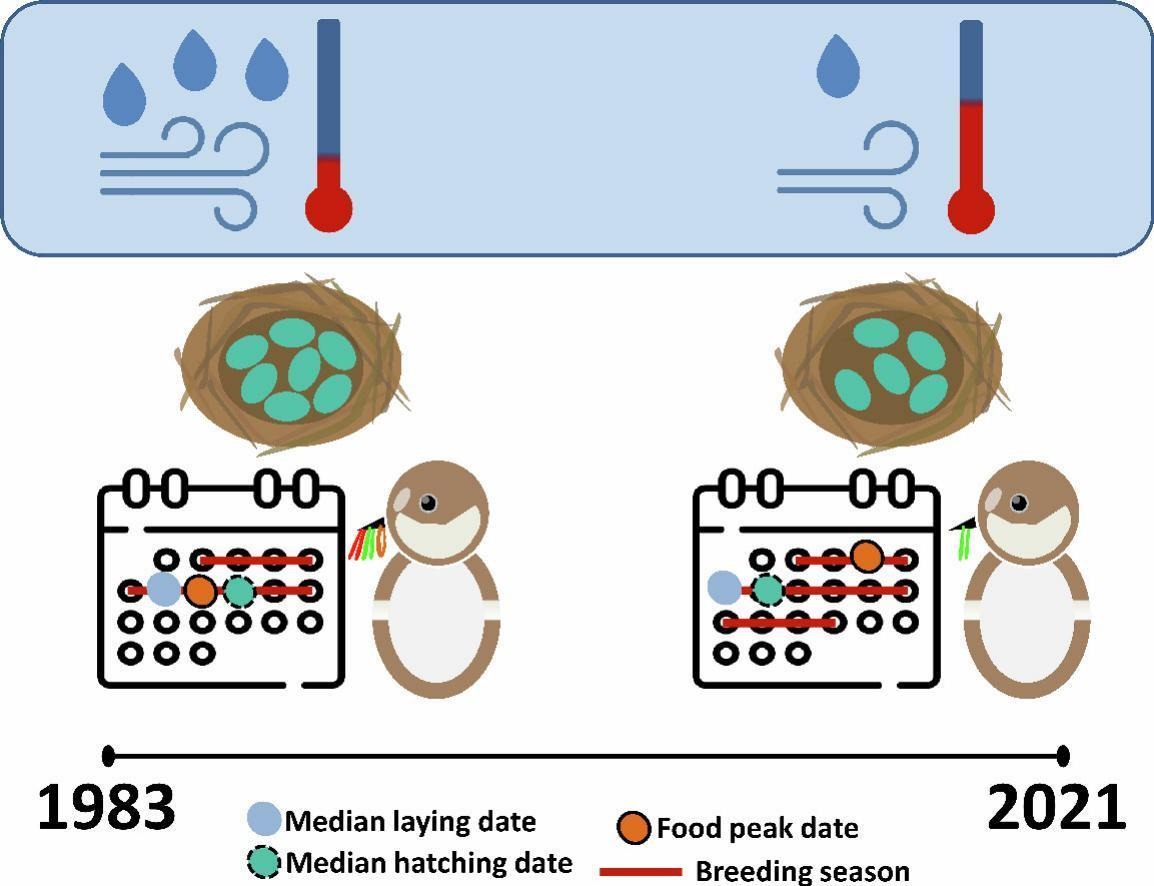Responses in the breeding parameters of the collared flycatcher to the changing climate
Global climate change involves various aspects of climate, including precipitation changes and declining surface wind speeds, but studies investigating biological responses have often focused on the impacts of rising temperatures. Additionally, related long-term studies on bird reproduction tend to concentrate on breeding onset, even though other aspects of breeding could also be sensitive to the diverse weather aspects. This study aimed to explore how multiple aspects of breeding (breeding onset, hatching delay, breeding season length, clutch size, fledgling number) were associated with different weather components. We used an almost four-decade-long dataset to investigate the various aspects of breeding parameters of a collared flycatcher (Ficedula albicollis) population in the Carpathian Basin. Analyses revealed some considerable associations, for example, breeding seasons lengthened with the amount of daily precipitation, and clutch size increased with the number of cool days. Parallel and opposing changes in the correlated pairs of breeding and weather parameters were also observed. The phenological mismatch between prey availability and breeding time slightly increased, and fledgling number strongly decreased with increasing mistiming. Our results highlighted the intricate interplay between climate change and the reproductive patterns of migratory birds, emphasizing the need for a holistic approach. The results also underscored the potential threats posed by climate change to bird populations and the importance of adaptive responses to changing environmental conditions.

